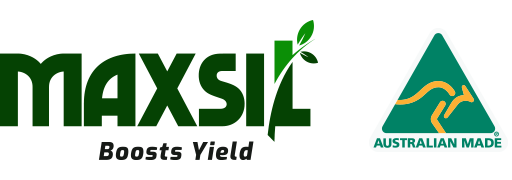MaxSil demonstrates big yield increases in sugar cane trials
MaxSil silicon fertiliser has produced significant yield and biomass increases from a series of sugar cane farm trials in the northern cane growing regions of Queensland since 2012.
A series of extensive farm trials using Maxsil with sugar growers were conducted in the Tully, Childers and Bundaberg regions from 2012 to 2018.
Two of those trials were in the Tully region during 2012. Both growers involved ended up buying the product so the trial was reliant on their observations.
These crops were harvested during October 2013. Both growers reported an observed increase in yield and sugar content and subsequently repurchased MaxSil product for plant and ration cane for the 2013 season.
Further sugar cane trials were established in late 2013 and 2014 with agronomists at Proserpine and Ingham.
These trials on farms owned and operated by sugar mills, were in the form of comparative “strip” trials that allowed for controlled monitoring of the crop through to harvest as well as harvest yield and sugar content.
The trials were significant as they encompassed some 300 hectares of sugar cane in both new plant cane and ratoon (regrowth) crops monitored by the agronomists and farm managers.
The average yield increase including trials that extended to 2018 at Childers, Bundaberg and Tully was about 8.3 tonnes a hectare.
In one trial despite no application of MaxSil to a crop it still out-yielded the control plot by 7t/ha facilitated by the effect of the product being applied the previous year. Also of significance there was no silicon deficiency detected from soil tests.
In another trial on ratoon cane in late 2017 and harvested during mid-2018 in the Bundaberg area, the MaxSil treatment conferred a 19.7pc (16 tonne) increase with a 4pc increase in commercial cane sugar (CCS).
In all these trials, with one exception, there was an increase in sugar cane biomass, as high as 24 t/ha and an average yield increase of 8.3 t/ha.
CCS values averaging 14.18pc were also maintained with the MaxSil treatment, which was marginally higher than the 14.12pc in the control plots without the fertiliser.
In some trials, there was statistically significantly higher CCS, as well as biomass yield, in the MaxSil-treated sugar cane.
Importantly, the incidence of orange rust was reduced by 41-50pc in the MaxSil-treated sugar cane compared with the non-treated control. This disease has the potential to reduce crop yields by more than 40pc.
One of the country’s biggest sugar producers Maryborough Sugar conducted a replicated trial in 2012-2013. While the harvested crop showed no statistical difference in yield between the treated and untreated crop, it demonstrated a significant 40pc reduction in the incidence of orange rust.
In conclusion, a large body of pot and field trial work provides evidence of MaxSil being safe to crops as well as a proof of its application resulting in positive effects on growth, yield, and quality parameters of a range of crops grown in a variety of locations in Queensland, Tasmania and NSW, according to University of Western Australia Professor of soil science and plant nutrition, Zed Rengel.
“MaxSil application also increased crop resistance to pests and diseases, thus enhancing environmental sustainability of growing food. Importantly, the gross margin for crops grown with MaxSil was better than for those grown without,” he said.
“Based on the very large difference in plant-available Si (silicon), as determined by the five-day method of testing, being 13-to-25-fold greater in MaxSil than the two diatomite-based Si products and the extensive field testing of MaxSil in a range of crops, it is clear MaxSil is an excellent source of plant-available Si, and its application is beneficial to crop growth, yield, and quality, resulting in increased gross margin per hectare.
Professor Rengel, in a 2021 summary of the MaxSil crop trials, said many products marketed in Australia and overseas claimed extremely high overall levels of silicon but unfortunately provided little soluble silicon.
“Some product such as diatomite for instance may have silicon levels of up to 800,000 to 900,000 parts per million, but provide only 1200 parts per million of plant soluble silicon,” he said.
“These types of claims tend to confuse rather than educate, and the situation is further complicated by the fact that there have been a number of different methods developed to analyse for soluble silicon.”

